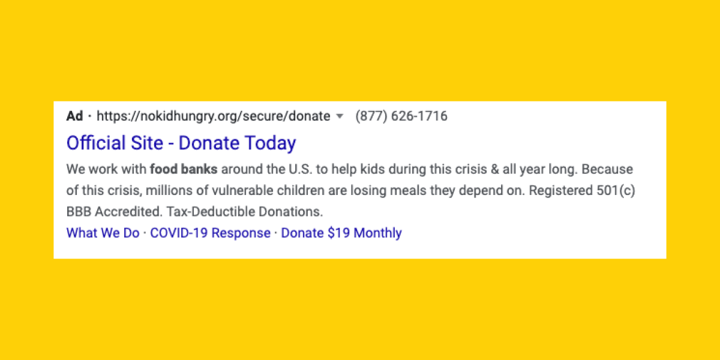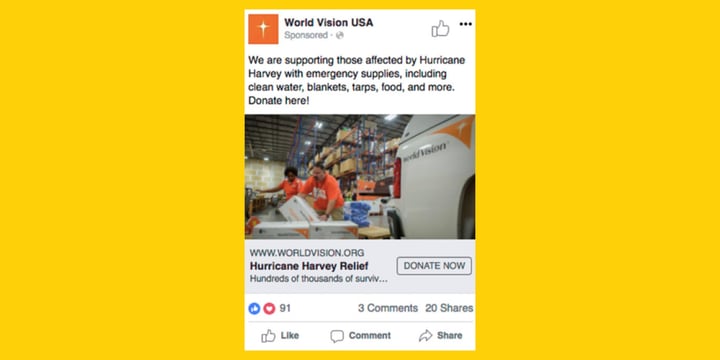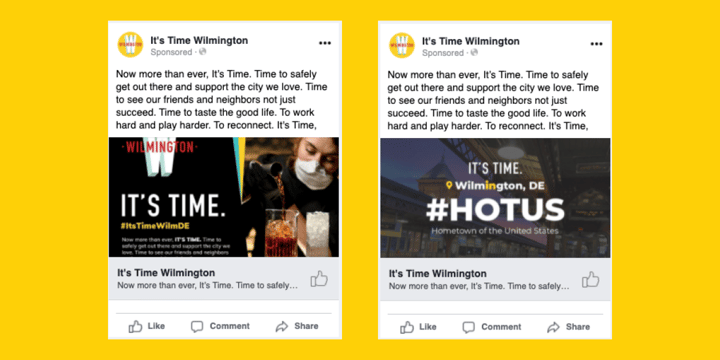Between April and July of 2020, TechSoup, in partnership with the digital marketing and technology agency Tapp Network, built our first Nonprofit Digital Marketing Benchmark Survey. Our mission was to gather data on how nonprofits were responding to the drastic change in digital communications amidst a pandemic and to provide helpful insights and recommendations.
From paid advertising and email marketing to social media and content, we've uncovered the data your nonprofit can use to measure your digital marketing. Last month, we took a look into our findings on email marketing. Before that, we offered insights gained from our inquiry of how nonprofits use social media and blogging.
In this final installment of a four-part series on our findings, we'll be taking a look at some key insights we found for nonprofit paid advertising.

Nonprofits oftentimes face the reality of working with limited budgets and resources, traditionally leaving marketing and advertising near the bottom of the priority list. However, as we've discussed in our previous benchmark posts, competing in the digital landscape requires us to reexamine these priorities and find ways to reach new audiences that we may not have explored yet.
In our nonprofit digital marketing benchmark survey, we wanted to know how organizations were, and in some cases, were not, using paid advertising. We discovered that 77 percent of our respondents reported they are not using any form of paid advertising to promote their organization. If you're one of those not using paid advertising, 2021 might be your year to try it out.
Why Are Nonprofits Not Using Paid Ads?
We're all looking to find new audiences to visit our websites and learn about our organizations. So, our first question for nonprofits not using paid ads is, "Why not?"
Of those that stated they are not using paid ads, 34 percent said that they don't have the budget to spend on ads, 14 percent stated that they don't know how to make them, 9 percent stated that they tried but were unsuccessful, with the remainder stating other reasons. So let's take a look at these three main reasons.
I Don't Have the Budget
As we mentioned before, resources can be limited for nonprofits. However, there are great programs like Google Ad Grants that offer nonprofits up to $10,000 a month of free advertising. What's better about this is that our benchmark data shows that search results are the second largest traffic drivers to nonprofits' websites.
Whether you're using the free ad spend from Google or paying out of pocket for social media ads, four out of five nonprofits that reported they're using paid ads are spending less than $500 a month.
Takeaway: Explore the opportunity of applying for Google Ad Grants or talk with your board about putting aside $100 to $200 a month for three months with the goal of increasing traffic to your website. It doesn't take a large budget to see results.
I Don't Know How to Make Them
When referencing limited resources, I don't just mean budget. Learning how to create and run paid advertising can be overwhelming and time-consuming. However, understanding the different types of paid ads and tackling one at a time is a good start. While this is not a complete list, here are two examples of paid ads that nonprofits may choose to implement in their marketing strategies.
- Google Search Ads: These ads appear at the top of search results that are related to specific "keywords" or matching phrases that a user types into the search bar. For instance, if you're a food bank, you might choose to run ads if someone types in "Donate food to food banks."

- Facebook Ads: Facebook allows organizations to easily target individuals based on location, demographics, and even interests. It allows "sponsored" ads to appear in their news feed. For example, if your organization offers disaster relief, you may choose to target people who like Red Cross.

Which one should you use? We asked those nonprofits who are running paid ads whether they are using Google search ads or Facebook ads and found that 71 percent are using Facebook ads and 28 percent use Google search ads.
Takeaway: Don't feel like you have to do it all. Try exploring one type of paid advertising. Both Facebook and Google offer free, short, and easy-to-understand how-to guides and videos that can get you started.
And don't miss two great blog posts from TechSoup on the subject:
- 6 Best Practices for Nonprofit Digital Advertising Success in 2021
- 7 Steps to Prepare for an Effective Nonprofit Facebook Ad Campaign
I Tried but Was Unsuccessful
One of the first things I was taught in marketing is that it is as much an art as it is a science. And while we always hope for ultimate success, there are times that we don't hit the goals or milestones that we're hoping for. But, for any campaign, organic (unpaid) or paid, we always walk away with something — data.
It can be a hard pill to swallow, but sometimes it's just as important to know what doesn't work as it is to know what does. The most important thing to consider when accepting this fact is optimization. There are ways to ensure that your paid advertising is continuously being optimized throughout an active campaign. One common strategy is A/B testing. If you read my most recent blog post on email marketing, you'll probably be familiar with this term. As a refresher, A/B testing involves changing one single attribute and testing how that change impacts performance.

For example, an A/B test for a Facebook ad could be changing the call-to-action at the bottom of the sponsored ad and seeing how that might affect a user's behavior. There may be a subtle or drastic difference between "Sign Up" and "Subscribe Now." Another A/B example may involve keeping the same text and call-to-action but changing the image to see which one performs better.
Takeaway: Continue to implement strategies into your paid advertising that will allow you to learn more about your audiences and optimize your efforts. Remember, an "unsuccessful" ad can still provide helpful data and insights that you can use moving forward.
If you're interested in exploring more about paid advertising, feel free to reach out to our experts! And don't forget to download our 2021 Nonprofit Digital Marketing Benchmark Report.
Additional Resources
- TechSoup offers courses on both Facebook advertising and Google Ad Grants.
- Take advantage of TechSoup's Digital Marketing Services for Nonprofits.
- Find out How Can Facebook Analytics and Insights Help Your Nonprofit?
- Get more info about Driving Online Connection with the Google Ad Grant.
Top photo: Shutterstock








